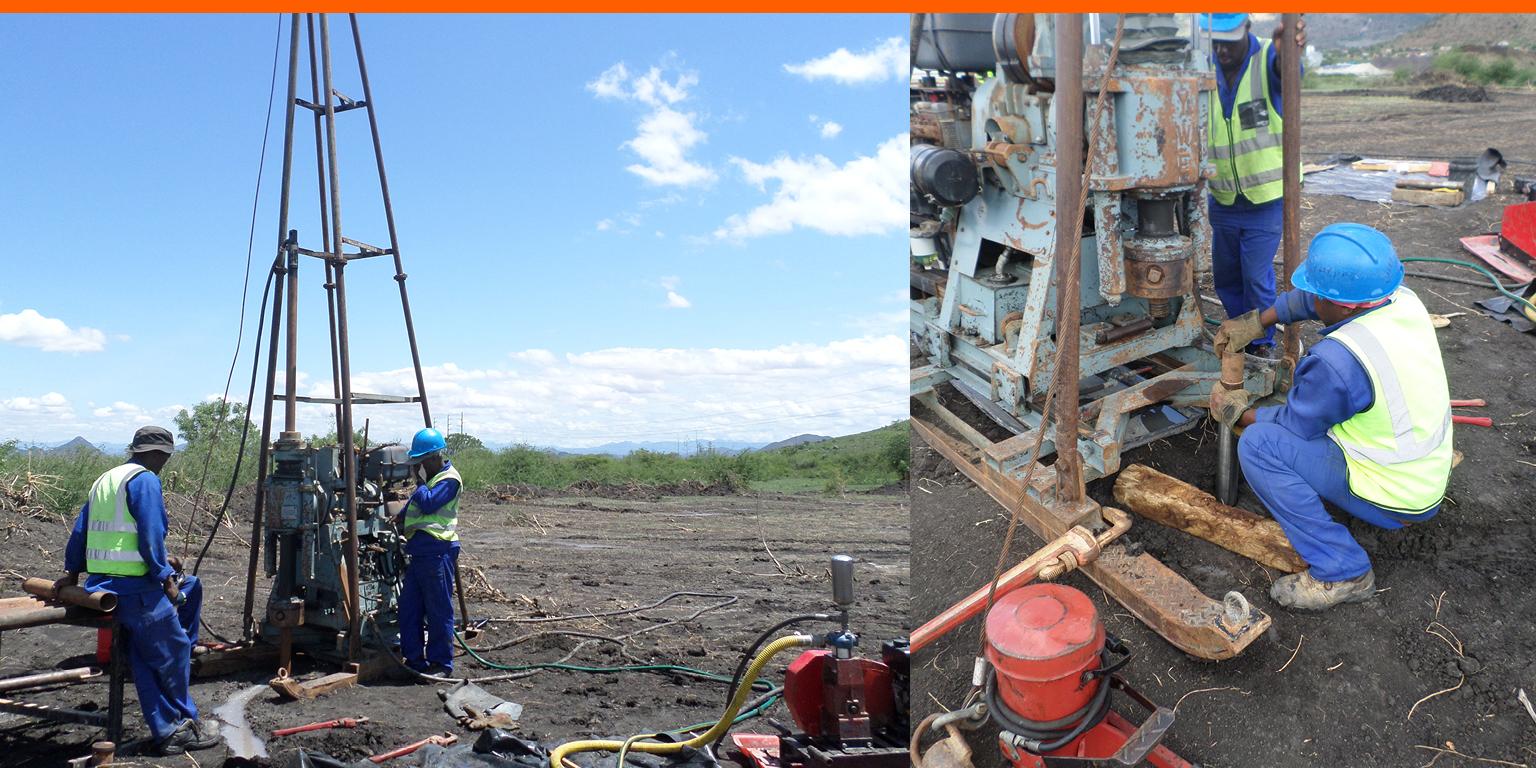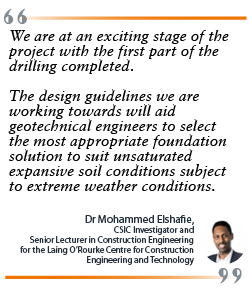
Published on 21 August 2019
Now in its second year, Wind Africa is a collaborative project which aims to support the potential of renewable energy resources to generate power across the continent and is funded by the Engineering and Physical Sciences Research Council (EPSRC).
Approximately half of Africa’s population lacks access to electricity and more power generation is also needed to meet future demand. It is estimated that 35 percent of the world’s resources for wind energy could be located in the continent, but there are several challenges to developing the necessary infrastructure. Arid conditions result in unsaturated soil, mostly expansive clay, which makes founding wind turbines difficult. The soil also changes throughout the seasons and with variations in moisture content; surfaces heave in the wet season and shrink in the dry season. These cycles can cause significant damage to buildings founded on these soils.
The aim of the WindAfrica project is to develop a set of design guidelines for piled wind turbine foundations in expansive clay to support growth of a sustainable energy market in Africa.
There are four work packages to the project:
| 1. | To perform field tests on the cyclic response of foundations on unsaturated expansive soils |
| 2. | To complement the field testing with centrifuge tests |
| 3. | To perform an extensive laboratory study on samples of soils taken from expansive soil regions in Africa |
| 4. | To develop a numerical analysis code to allow detailed studies to be performed on foundations with various geometries and configurations. |
The first and third packages are being undertaken by researchers in Cambridge, led Dr Mohammed Elshafie, CSIC Investigator and Senior Lecturer for the Laing O’Rourke Centre for Construction Engineering and Technology. The second and fourth packages of the project are being investigated by collaborators at the University of Pretoria and Durham University respectively.
In January, a geotechnical drilling investigation took place on the proposed field-testing site in South Africa. The site was chosen as evidence of problems with structures can be seen in the cracks in nearby buildings and it is a large open area of known expansive clay, with a lack of current infrastructure that could be impacted by testing. The aim of this preliminary investigation was to find out the depth of the expansive material and the depth of the rock to ensure the suitability of the site for further testing. Two boreholes were drilled to investigate the profile of the soil and samples were taken for laboratory testing.
Rock was found at an approximate depth of 12m in both boreholes and slickensided material, which is evidence of expansive soil, was found throughout the profile until the transition to rock. Undisturbed soils were also taken from the boreholes for the laboratory testing in Cambridge.
Three types of testing were carried out on the soil samples; water retention, oedometer and triaxial tests to determine the moisture characteristics, stiffness and strength of the soil respectively. The samples were also characterised and were found to have the highest percentage of clay and the lowest of gravel. The change in the volumes of the samples were measured during wetting and drying cycles and shrinkages recorded. Swelling tests under different stress levels are still to be undertaken and mineralogical composition investigated.
Planning is now underway for the installation of the piles for the full field testing programme.
Contact: Dr Mohammed Elshafie, CSIC Investigator and Senior Lecturer in Construction Engineering for the Laing O’Rourke Centre for Construction Engineering & Technology
Team: Laing O’Rourke Centre Research Associates Dr Talia Da Silva and Dr Khalid Alhaj Abdalla
---
Reposted here with kind permission from Cambridge Centre for Smart Infrastructure and Construction
Click here to browse the full CSIC Annual Review.
The text in this work is licensed under a Creative Commons Attribution 4.0 International License.

